Australia’s job market demonstrated strength in August as employment numbers surged by 64.9k, a 0.5% mom increase, substantially eclipsing expectation of 24.3k. Dissecting this growth reveals a modest increment in full-time jobs, which saw rise of 2.8k, whereas part-time positions surged, accounting for 62.1k rise.
Unemployment rate remained steady at 3.7%, aligning with market anticipations. Concurrently, there was a slight uptick in participation rate, which climbed by 0.1% to reach 67.0%. Monthly hours worked dropped -0.5% mom or -9m hours.
Bjorn Jarvis, head of labour statistics at ABS, contextualized this development, linking the pronounced growth in August to a minor slump experienced in July, a period coinciding with school holidays. The two-month average employment increment was roughly around 32k monthly, mirroring the mean growth observed over the past year.
“The strength in hours worked over the past year, relative to employment growth, shows the demand for labour is continuing to be met by people working more hours, to some extent,” Jarvis noted.




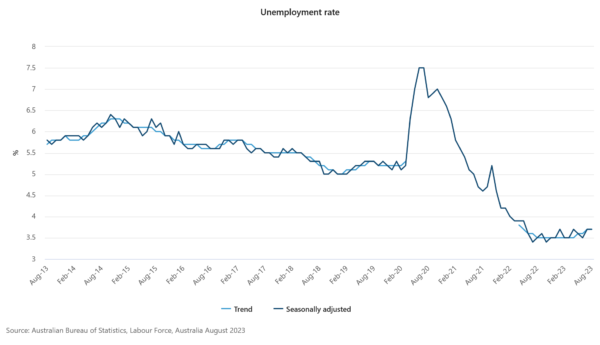
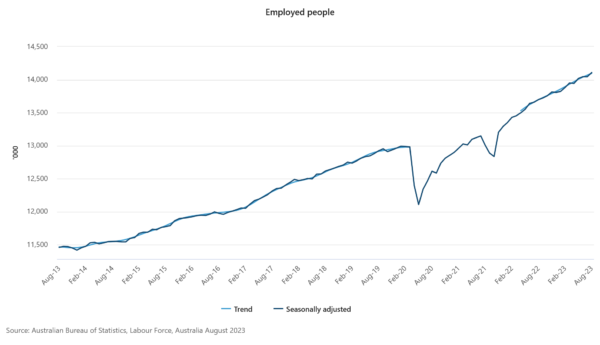
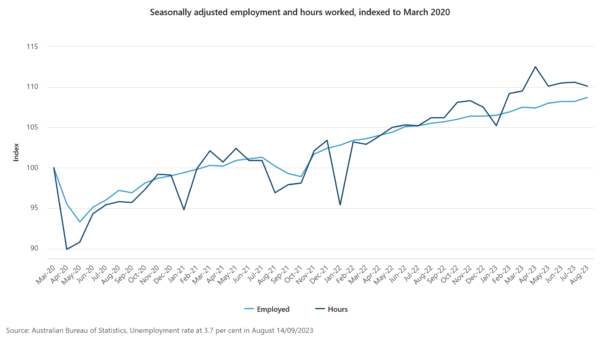

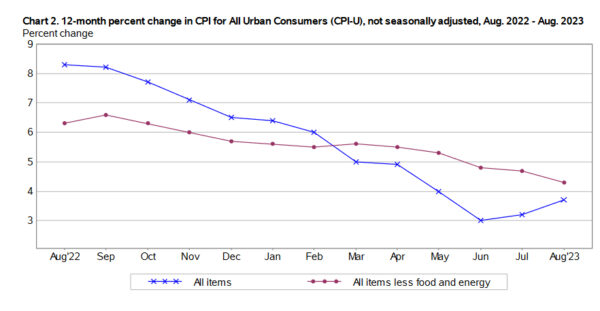

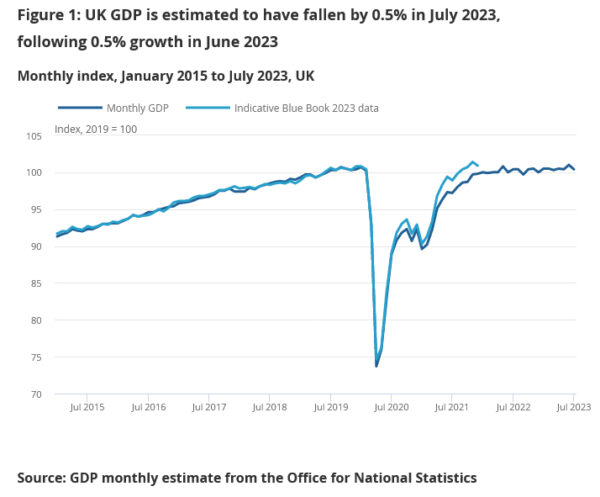
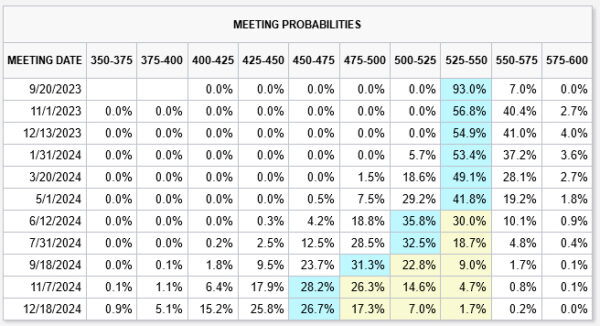
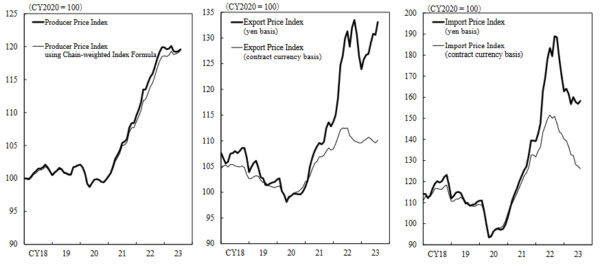
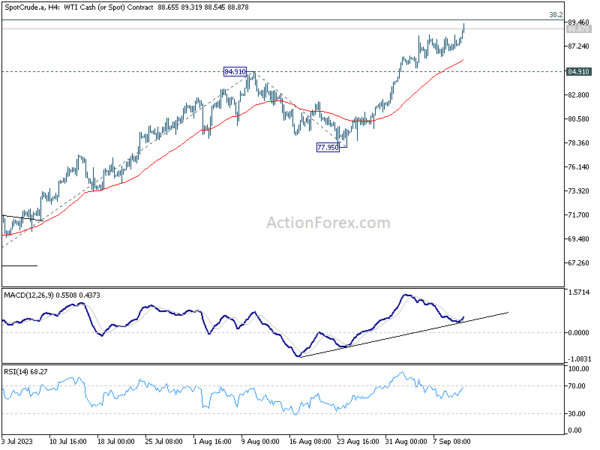
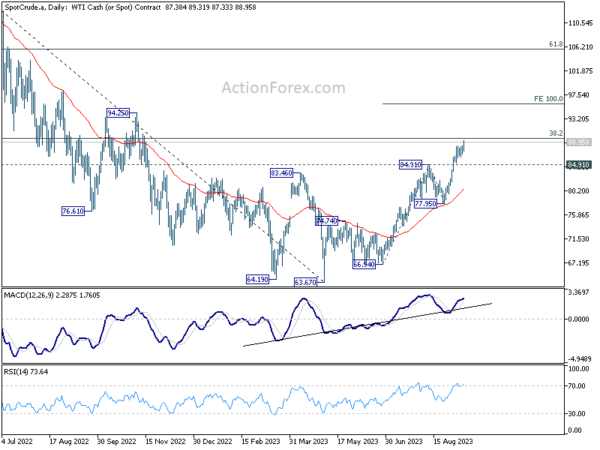
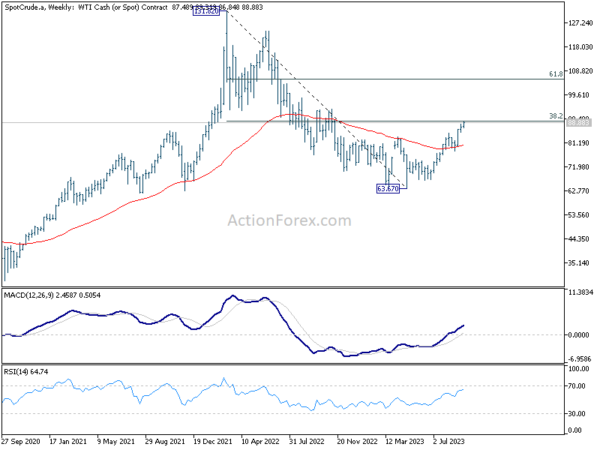
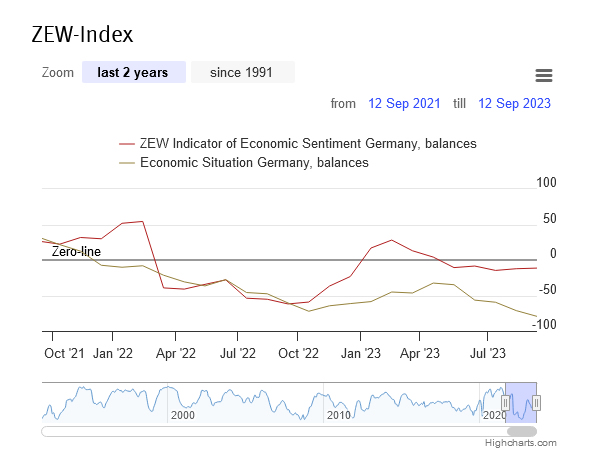
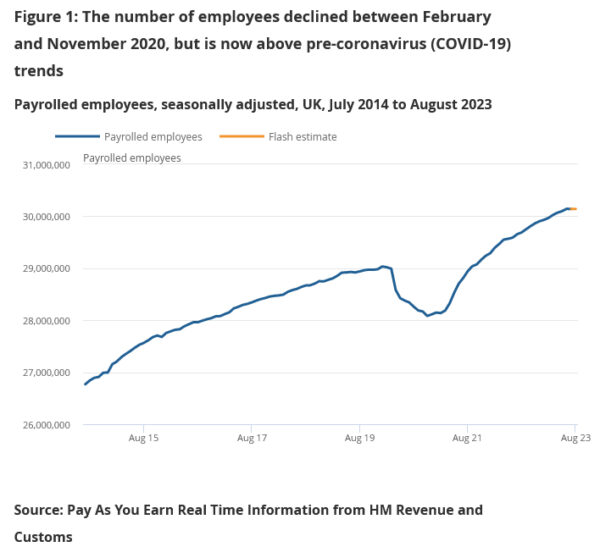
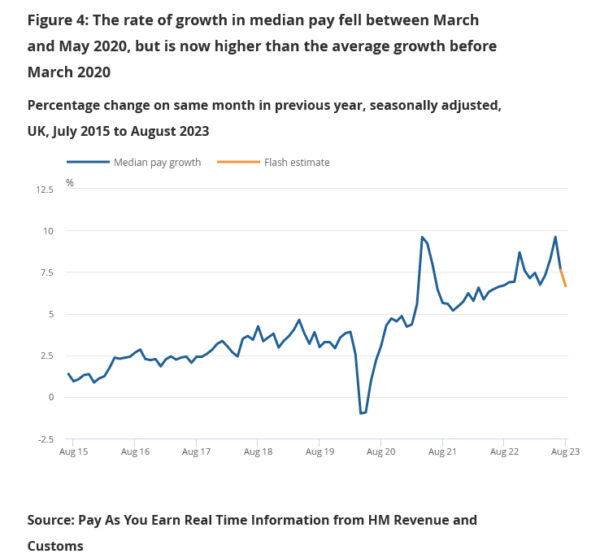
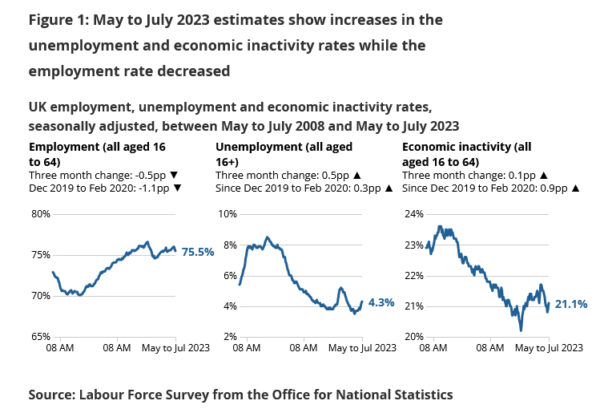
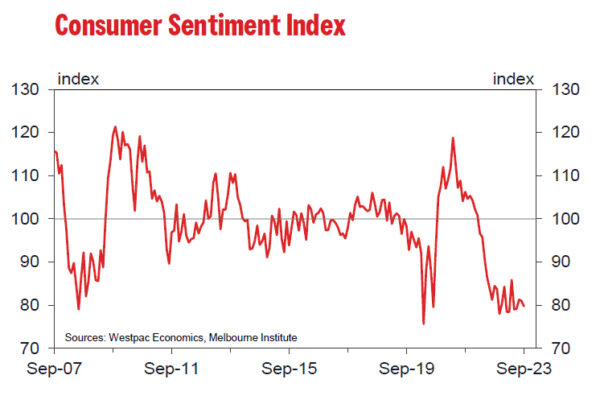
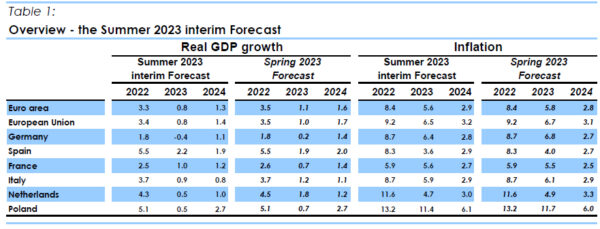
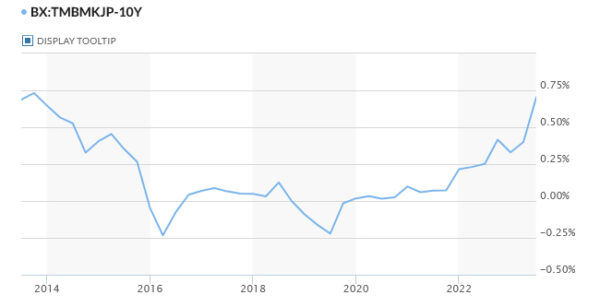
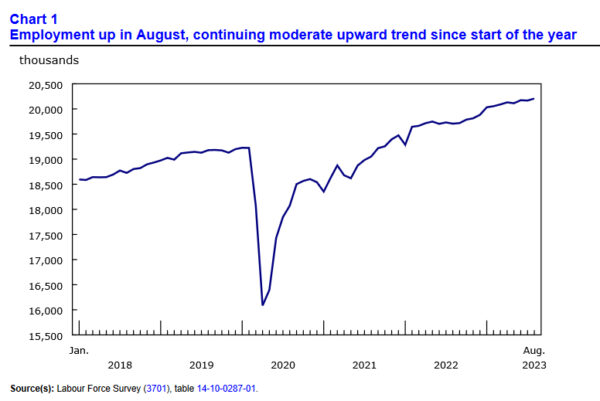
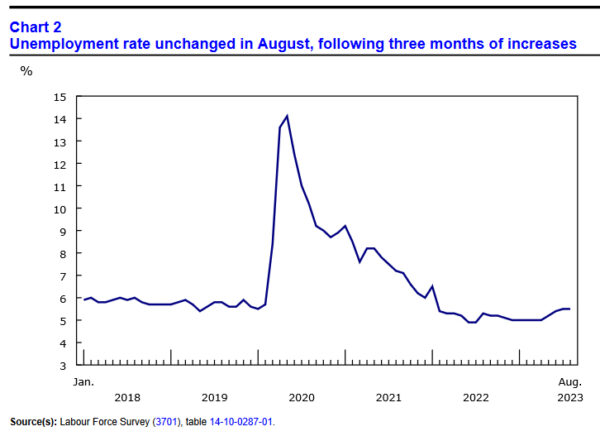
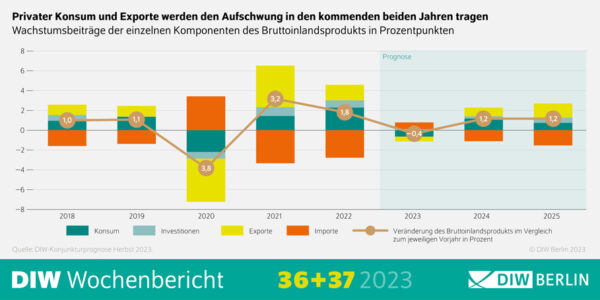

Markets in suspense ahead of ECB; Could EUR/USD bounce from here?
As the global financial market eagerly anticipates today’s pivotal ECB rate decision, the pendulum of market expectations has been swinging vigorously, making it the most uncertain ECB meeting in recent times. Initial market sentiment leaned towards a pause; however, a recent Reuters report ignited speculation about a potential rate hike.
The mentioned report suggested that ECB could revise its 2024 inflation forecast upwards, well pass the 3% mark, thereby strengthening the case for a rate increase. Consequently, odds for a 25bps hike escalated to nearly 70%, a significant rise from around 40% noted on Monday. If this materializes, we could see the main refinancing rate and deposit rate shift to 4.50% and 4.00% respectively.
Adding a layer of complexity to the anticipations is Vice President Luis de Guindos’ earlier assertion, dating back to August 31, where he said that the impending inflation forecasts are “similar to what we had in June”, steering away from the prospect of an excessive upward revision. Moreover, European Commission had marginally adjusted Eurozone inflation rate from 5.8% to 5.6% for 2023 and increased the 2024 forecast from 2.8% to 2.9%. That casts further doubts on the aggressive inflation predictions noted in the Reuters report.
The market is not just hinging on the rate verdict. A myriad of factors stand as potential catalysts in steering the financial markets post the announcement. The ECB is expected to maintain its stance of basing future verdicts on evolving data dynamics. However, there might be subtle indications given on whether interest rates have reached its peak, whether it hikes or not today.
Furthermore, growth projections are on the verge of being revised to possibly match European Commission’s grim outlook. The Commission had notably scaled down the growth forecasts for 2023 and 2024 to 0.8% and 1.3% respectively, a decrement from the previous estimates of 1.1% and 1.6%.
As for EUR/USD it’s now standing close to an important cluster support zone at 1.0634, (38.2% retracement of 0.9534 to 1.1274 at 1.0609). There is prospect of a near term bullish reversal from current level, to finish off the whole decline from 1.1274. But decisive break of 1.0944 resistance is needed to confirm this case, or risk will stay on the downside. On the other hand, sustained break of 1.0609/0634 will raise the chance of medium term term bearish trend reversal, and target 61.8% retracement at 1.0199.